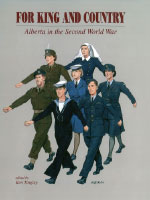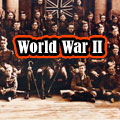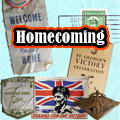Redeeming the War on the Homefront: Alberta's Japanese Community During the Second World War and After
David ]. Goa
Reprinted with permission of the author and publisher of For King and Country: Alberta in the Second World War The behaviour of adults, teenagers and children alike was usually impeccable, and the explanation lies deeper than merely the fear of state suppression. At the same time, the beet workers did organize and make their concerns and needs clear, attempting to change the intolerable conditions which adversely affected some of their members. Following the war many Japanese decided to stay in southern Alberta and set about building community institutions and entering into the civil life of the region. The cultural sources of filial piety run deep and were more than a match for the trauma of a decade.31
The behaviour of adults, teenagers and children alike was usually impeccable, and the explanation lies deeper than merely the fear of state suppression. At the same time, the beet workers did organize and make their concerns and needs clear, attempting to change the intolerable conditions which adversely affected some of their members. Following the war many Japanese decided to stay in southern Alberta and set about building community institutions and entering into the civil life of the region. The cultural sources of filial piety run deep and were more than a match for the trauma of a decade.31
I was first welcomed into the Japanese community while doing field research for the Provincial Museum of Alberta about fifteen years ago. In conversations with a number of elderly men and women about the shape and meaning of their cultural life, the occasional comment was made about the evacuation and their place in Canada. My attempts to pursue this avenue of conversation rarely developed beyond the obvious historical facts. Within the last two years I have returned to Picture Butte, Lethbridge, and Raymond to discuss the historical experience of the community. To my considerable surprise we have talked at length about the evacuation, resettlement in Alberta during the war years, and the implications for their life and the lives of their children. The apology of the Canadian Government on 22 September 1988 for the treatment of Japanese Canadians caught by the dreadful circumstances of war and identified as a potential national security risk has opened the door to the memory of the war years. Canada's recognition of and apology for its wrongful treatment of the Japanese was welcomed by the community. A number of people talked about how they can now speak to their children about the pain and difficulty of those years and to each other and their neighbours about its joys. The shame of Canada has been lifted by the apology and the Japanese community, with its high cultural regard for the “prince”, as Confucius put it in the Hsiao Ching - its high regard for nation and government - can open to the memory of those years and speak about its terrors and joys.
For some years I have wondered why none of the studies of the Japanese experience in Canada has reflected on the sources within Japanese culture which were used by the community to address the difficulties of the war period. In a discussion with Rev. Kyojo Ikuta,32 a long-time Jodo Shinshu Priest in Calgary, I raised the theme of the spiritual sources in Buddhism and Nee-Confucianism which were drawn upon to help the Japanese rebuild a shattered world. Rev. Ikuta suggested that the emphasis on social justice issues in the interpretations of the war years had its roots in the human rights legislation of Canada and the ethical concerns of Christians. Ikuta stated that most of the Japanese interpreters of the period and many who were involved in working for an apology by the Canadian government were Christian. For them, understandably, the social justice issues were in the foreground. Glimpsing the spiritual sources within Japanese culture was an important part of completing our understanding of the war period and its effect 011 the community, as well as the response of the community. This response has intrigued me for many years. At the heart of Buddhism, and in the very structure and purpose of family and community life, as rooted in the ancient ideas of Confucius, lie the keys to understanding how the Japanese were able to act in such a redemptive way. In so doing the elders of this community in southern Alberta have educated the character of us all.
Notes
31. About 1300 young Japanese-Canadian men were moved to work camps along the Yellowhead-Blue River Highway. Three temporary camps were located near Gauche and Decoigne, west of Jasper townsite, in mid-1942. A brief sit-down strike occurred at Decoigne in March 1942 to protest living conditions in the camp. This in turn prompted the movement of the 8th Canadian Divisional Headquarters to Jasper. See Bill Waiser, "Labour Camps in Western Canada's National Parks, 1914-1945", Canadian Heritage, Parks Canada, Research Bulletin No. 309 [September 1994]; also Provincial Archives of Alberta, 66.166/1446.
32. Interview with Rev. Kyojo Ikuta, March 1993.








